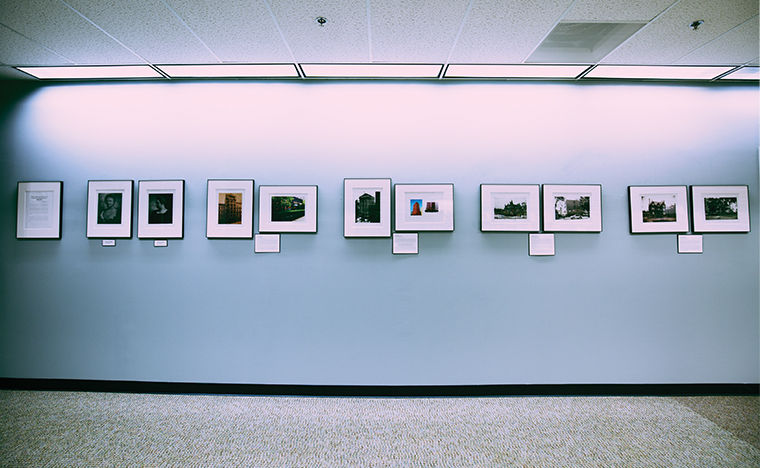History students mark 125 years with exhibit of past buildings
Erin McCarthy, acting chair of the Humanities, History & Social Sciences department, said students needed historical and current images for the exhibit “From Adams to the South Loop: Columbia College 1890-1975” detailing the college’s campus location history.
September 28, 2015
To commemorate Columbia’s 125th anniversary, students collaborated with the College Archives to create a photo exhibit on the second floor of the library, 624 S. Michigan Ave., illustrating the history of the college’s campus.
The exhibit was created by students in the “Public History: Presenting and Interpreting the Past” summer course, according to Erin McCarthy, Ph.D., acting chair of the Humanities, History & Social Sciences department.
McCarthy said the course studies how history is presented and made available to the public. She said students look at historical exhibits and talk about national parks, monuments and graveyards.
“History at Columbia should be applied as [much as] possible,” McCarthy said. “Whenever possible, our students should be doing what historians do, not simply reading about what historians do.”
Heidi Marshall, head of College Archives and Special Collections, said students learned how to research the history of buildings as well as how to supplement that with primary material related to the history and activities of the college.
“They worked in tandem with us because we have a lot of material already stored in the archives collection,” Marshall added.
Marshall said the exhibit is an educational moment used to explain that Columbia’s location has frequently changed, but it is a Chicago institution no matter what.
According to the Columbia Archives, Columbia has owned buildings outside the South Loop, including 3257 N. Sheffield Ave., from 1963–1977, 4730 N. Sheridan Road from 1970–2000 and the Charles Libby Mansion, 3358 S. Michigan Ave., from 1916–1925.
“A lot of our job in the College Archives is to help tie Columbia’s history to the greater history of Chicago,” Marshall said. “We spend a lot of time telling the history of Columbia’s early origins.”
McCarthy said students collected and identified a historical image as well a current image for the exhibit for comparison.
“It’s my personal mission as a historian at Columbia to find ways students can use archives and get experience doing primary research,” McCarthy said.
Luigi Moreno, a senior cinema art + science major who participated in the project, said it was interesting to see how the college changed throughout the years.
Moreno said the building he researched, 618 S. Michigan Ave., was owned by Columbia from 1927–1936, but the college sold and later repurchased the property.
“When we were first in the [618 S.] Michigan Ave. Building, we were just on one floor of the building—the seventh floor was the entire school,” Moreno said. “We’ve grown so much. We’ve added so many majors that were not already there.”
Haley Buntrock, also a senior cinema art + science major, researched Steinway Hall at 64 E. Van Buren St., which is now the CNA Center. Buntrock said she found it fascinating that Columbia occupies so much of Chicago’s historical architecture.
“One of my favorite things I researched was Frank Lloyd Wright’s office, which was in Steinway Hall during the same time [Columbia President] Mary Blood’s was there,” Buntrock said. “It’s also fascinating to think Wright was drawing up buildings that surround Chicago in Steinway Hall.”
McCarthy said she thinks the audience will see how the exhibit portrays Columbia as the urban institution it has always been.
“We’ve also always been dedicated to being where the culture is,” McCarthy said. “We were always really in the heart of the city and very near cultural institutions and cultural attractions.”
Marshall said it is important to share the college’s history because it shows Columbia’s commitment to the City of Chicago.
“If you know the direction the college has taken in its past, it can help inform your decisions for the future,” Marshall said.








